Imaging Projects
In this blog, I will share the results of all of my imaging projects. The newest will be at the top and the oldest will be further down the stack. Going back in time here is interesting - some of my early stuff was pretty rough - but I did not see it that way at the time - I was thrilled to get anything back that looked like an image! Hopefully, you will see how my work has progressed with time!
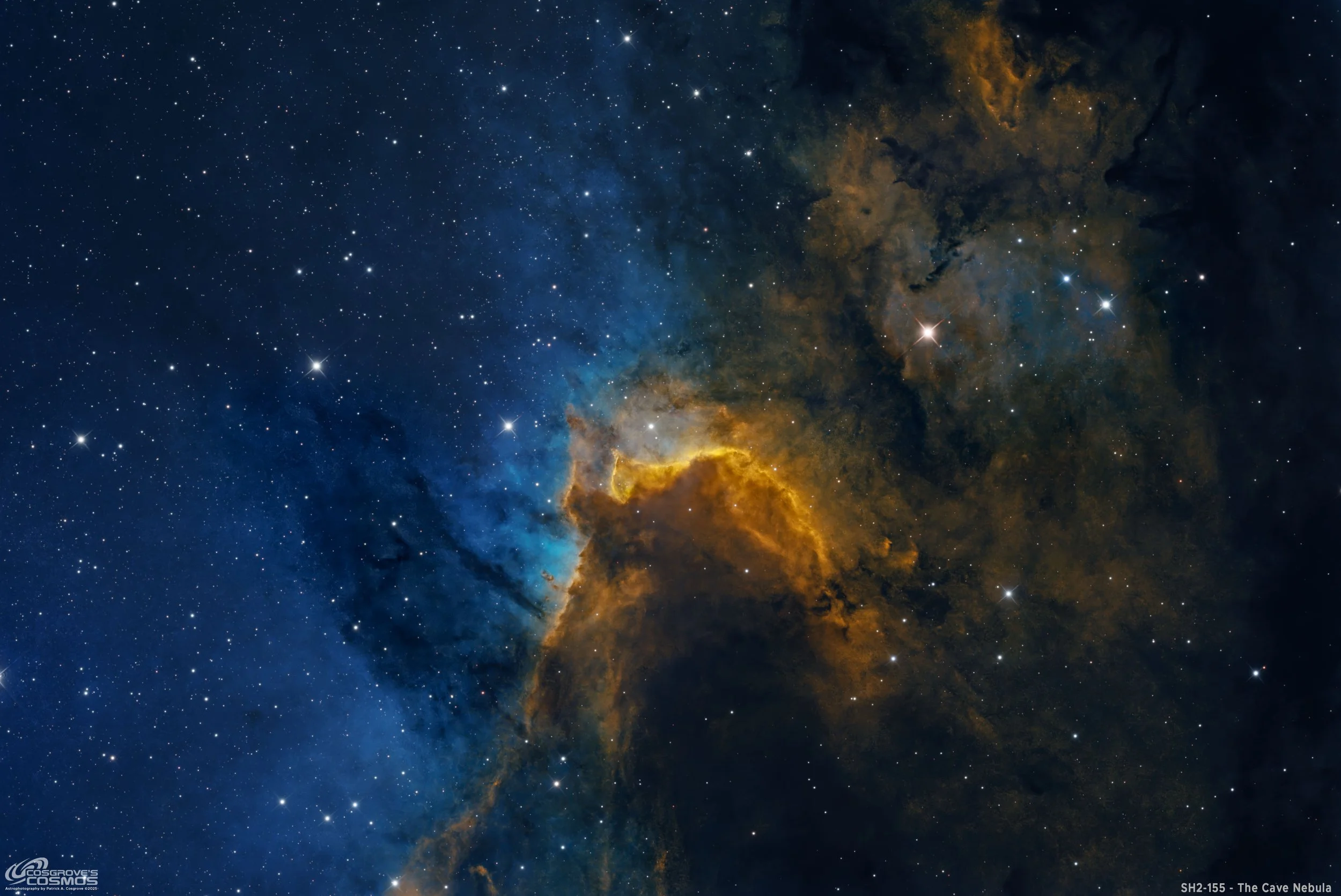
SH2-155 - The Cave Nebula 13.5 hours SHO (My 150th Project!)
After 5 years, I revisited SH2-155 - The Cave Nebula, this time gathering 13.5 hours narrowband data. This was shot with my new galaxy scope and the resulting colors really pop and dark dust is very mysterious looking!
This data was collected over three nights at the end of August 2025.
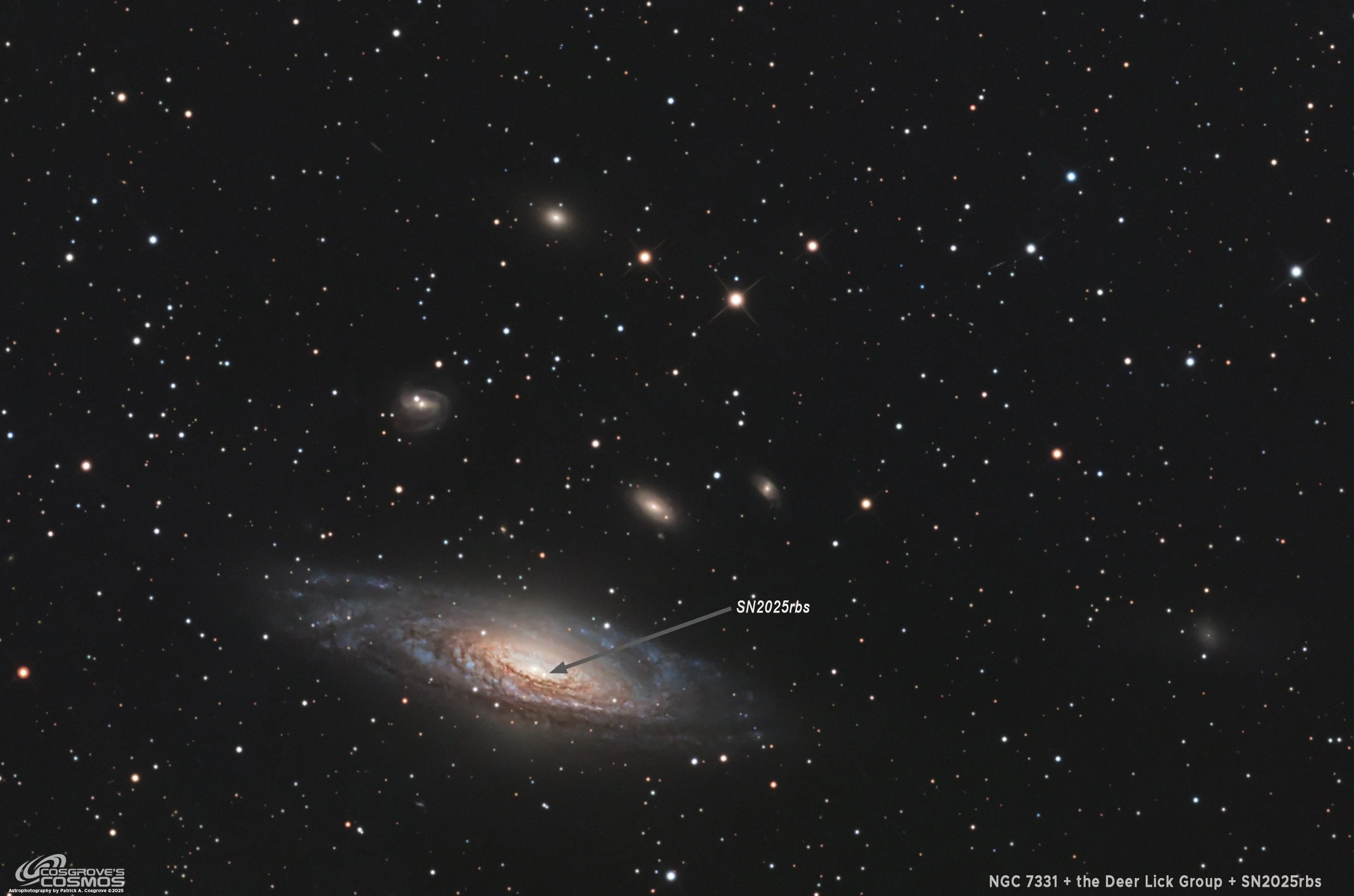
NGC 7331 and the Deer Lick Group with Supernova SN2025rbs (4.7 hours in LRGB)
While on a multi-night streak of capturing subs on my Sharpstar SCA 260 Galaxy scope, I retasked one night of shooting to try and get an image of NGC 7331 while Supernova SN2025rbs was still visible.

NGC 6543 - The Cat’s Eye Nebula w/ NGC 6522 (14.6 hours in LRGB)
This image of NGC 6543 - The Cat’s Eye - is the result of 14.6 hours of LRGB data captured with my Sharpstar SCA260V2 Platform. It was a faint and challenging object that also had very bright portions. This made it one of the most challenging targets I have processed yet. I must have reprocessed that data 8 or 9 times before I ended where I did. Was this the best image I could get from that data? I don’t think so. In the end, the effort exhausted me and I was ready to move on!!
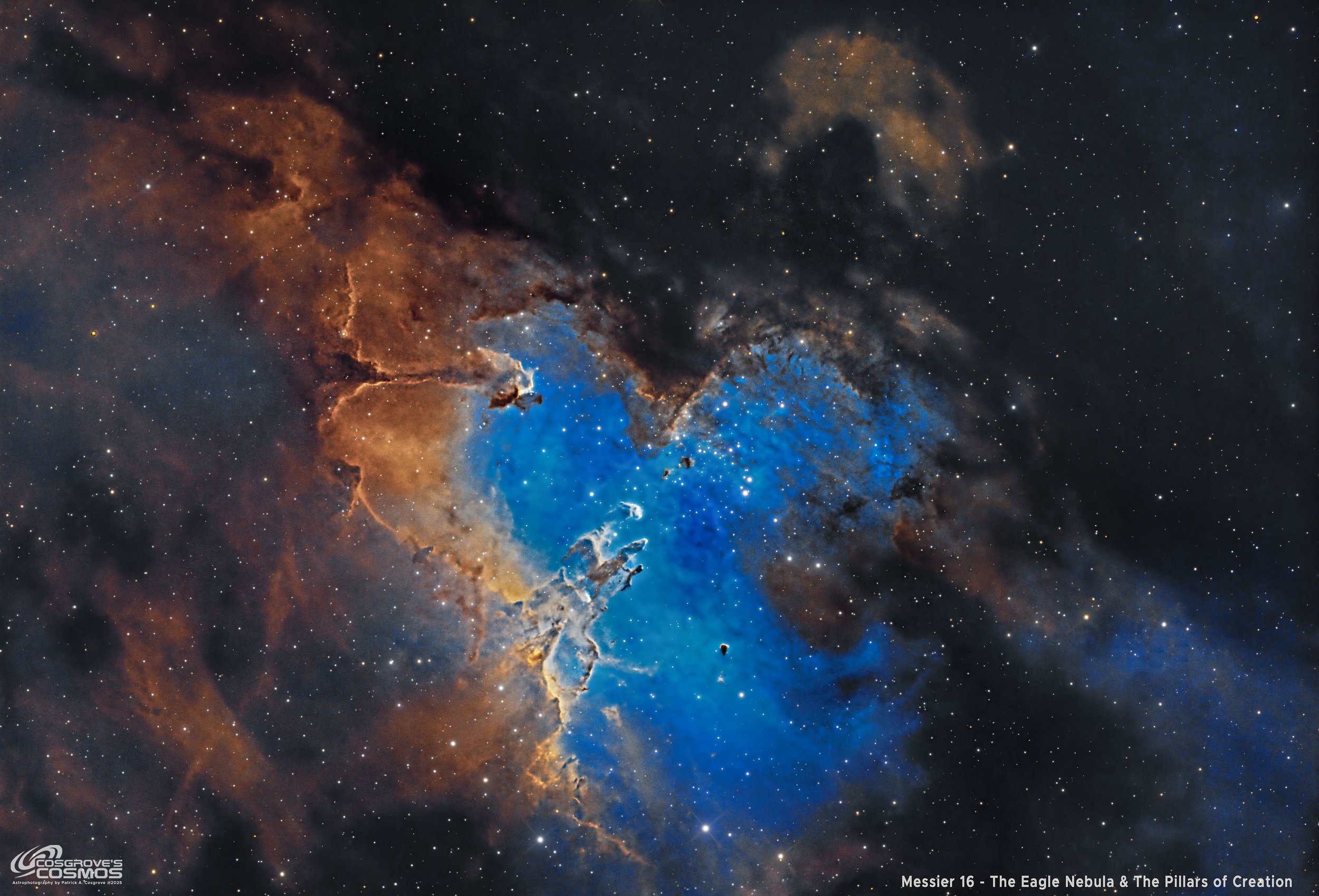
Messier 16 - The Eagle Nebula/The Pillars of Creation, 4.75 hours in SHO (A Narrowband Test of the SCA260 Scope)
This was a quick test to see how the Sharpstar SCA260 V2 scope did with a narrowband target. Selected was Messier 16, centered on the Pilrs of Creation. This was the result of 4.75 hrs of data collected on a very hot night, with the camera only getting to -10C.
Processing was a challenge due to Star Removal blemishes and some optical artifacts on some bright stars.
See the full report for details.

Messier 106 - First Light for The Sharpstar SCA260 V2! (10 hours in LHaRGB)
The first light for both my new Whispering Skies Observatory and my new Galaxy scope, the Sharpstar SCA260 V2!
This is M106 shot in HaLRGB with 10 hours and 7 minutes of integration!
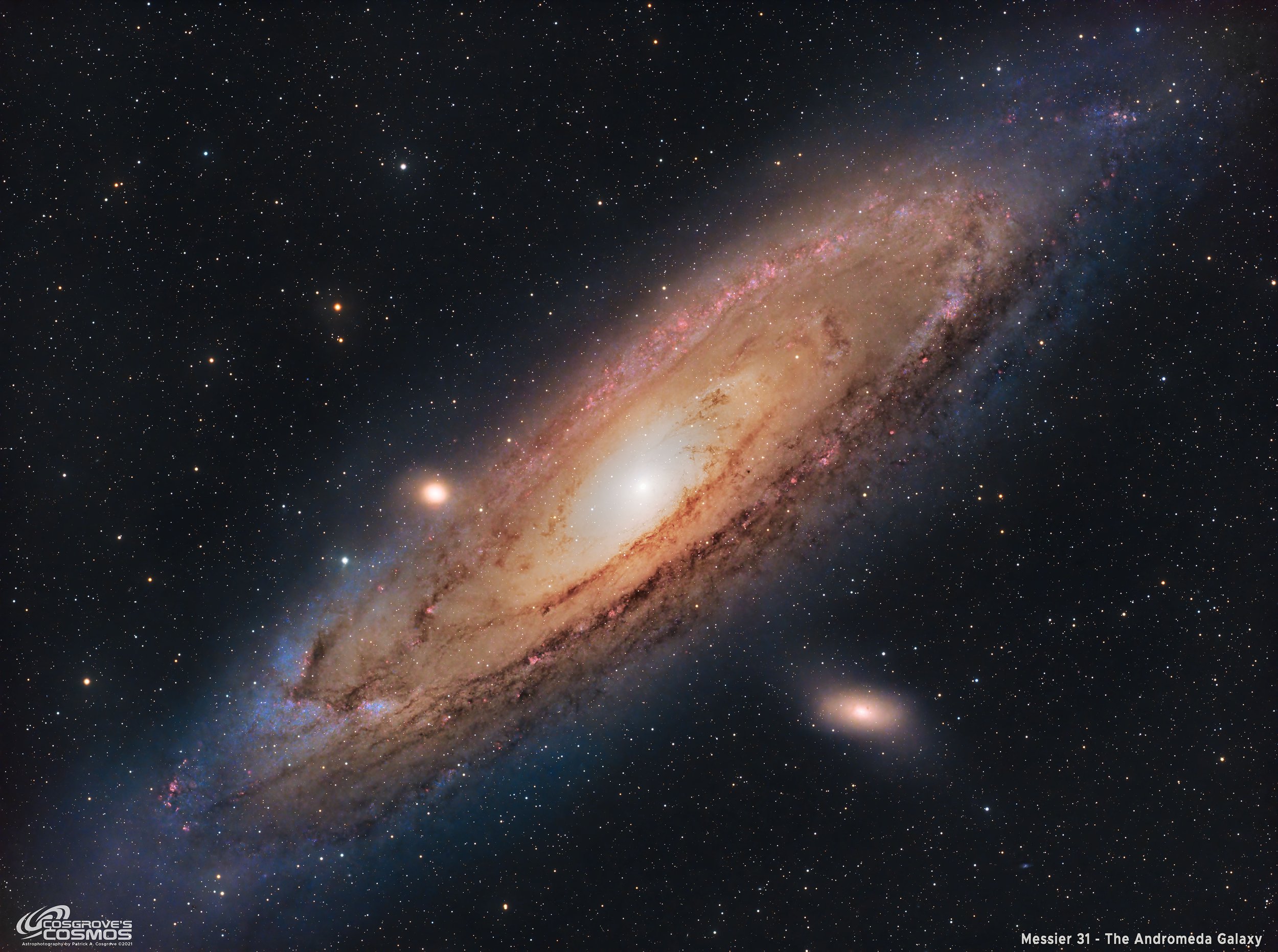
Reprocessing Project: Messier 31 - The Andromeda Galaxy (6 hours in LHaRGB)
This version of M31, taken in November 2021, is my favorite. But it has been a few years since I first captured and processed this data. I have learned a lot since then, and I also have some excellent new processing tools at my disposal, so I wanted to see where I would end up if I were to start from scratch with the data, and this is the result!
Let me know what you think of this new image!
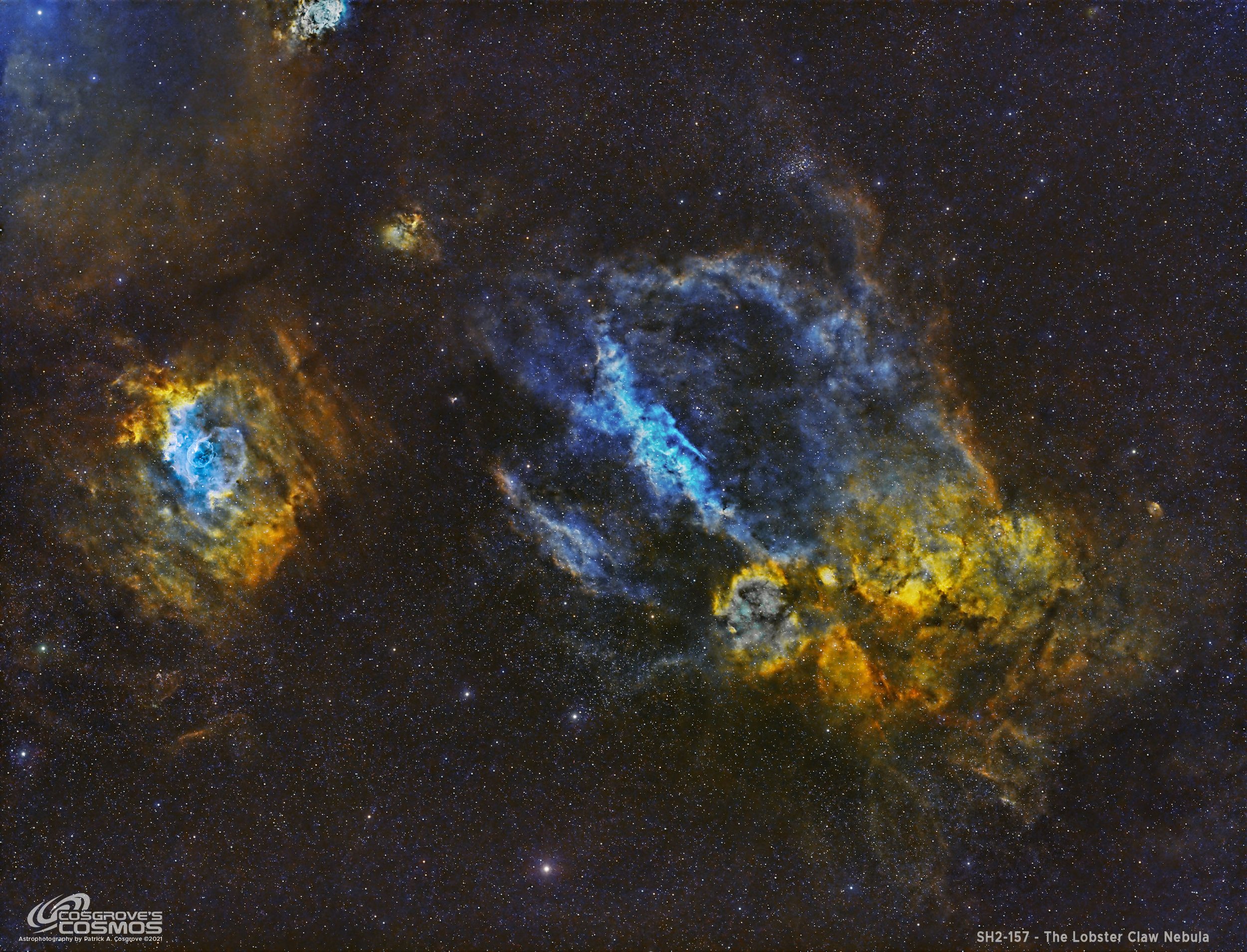
A Reprocess of SH2-157, The Lobster Claw Nebula - 4.25 hours in SHO.
SH2-157, The Lobster Claw Nebula, is located 11,000 light-years away in the constellation of Cassiopeia. This is a Reprocess Project - working with data in 2024 that was captured in 2021. I wanted to see if I could improve on this image. I think I did!

IC 2177 - The Seagull Nebula in SHO - with just 2 hours!
IC 2177, better known as the Seagull Nebula, is a rich HII emission region located 3650 light-years away located new the borders of the constellations Canis Magor and Monoceros.
This image results from slightly over 2 hours of narrowband integration on my 400mm wide field scope. This short integration time results from bad weather and sky access limitations due to trees on my property.
Careful processing was able to produce a reasonable image despite the lack of integration time.
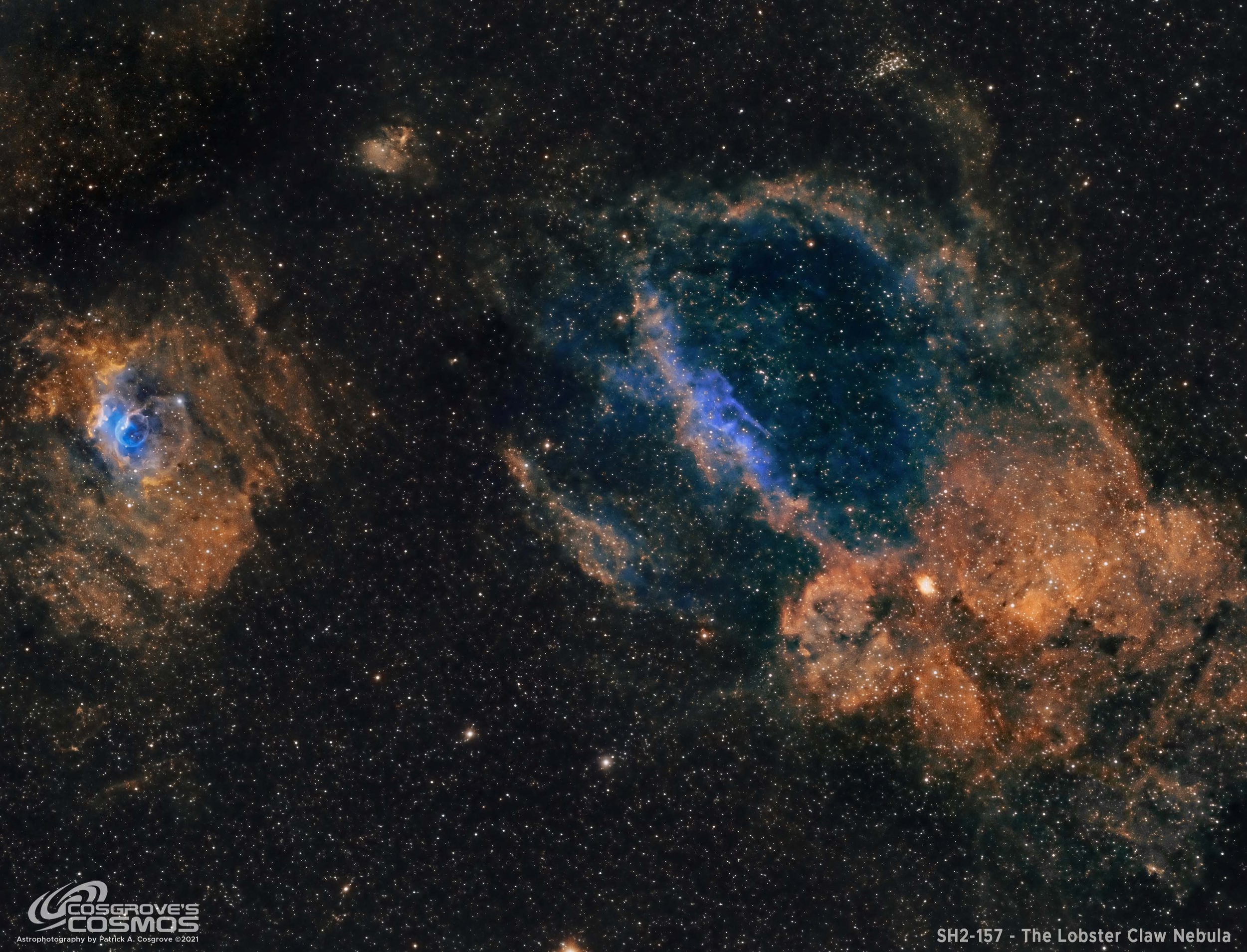
SH2-157 The Lobster Claw Nebula - with NGC 7635 (The Bubble Nebula) in SHO - 4.25 hours.
SH@-157, The Lobster Claw Nebula, is located 11,000 light-years away in the constellation of Cassiopeia. A faint object, this was captured on the night of November 8th when I hoped to have two more nights of clear weather. That did not happen and this image was created with only 4.25 hours of data. I hope to revisit this object, collect more hours and do it justice. This was shot on my wide-field FRA400 rig and is rendered in the Hubble SHO palette.

IC 63 - “The Ghost of Cassiopeia” in LHaRGB, ~10 hours
Located in 550 light-years wat in the constellation of Cassiopeia, IC 63 is known as the Ghost of Cassiopeia. This HII region is blasted by the Bright Star Gamma Cassiopeia which is located only 4 light-years from the nebula.
This is mage is the result of almost 10 hours of integration - unfortunately - the data had several significant issues that made processing very difficult. While the final image is far from perfect, it was clearly a case of making a silk purse from sow’s ear!
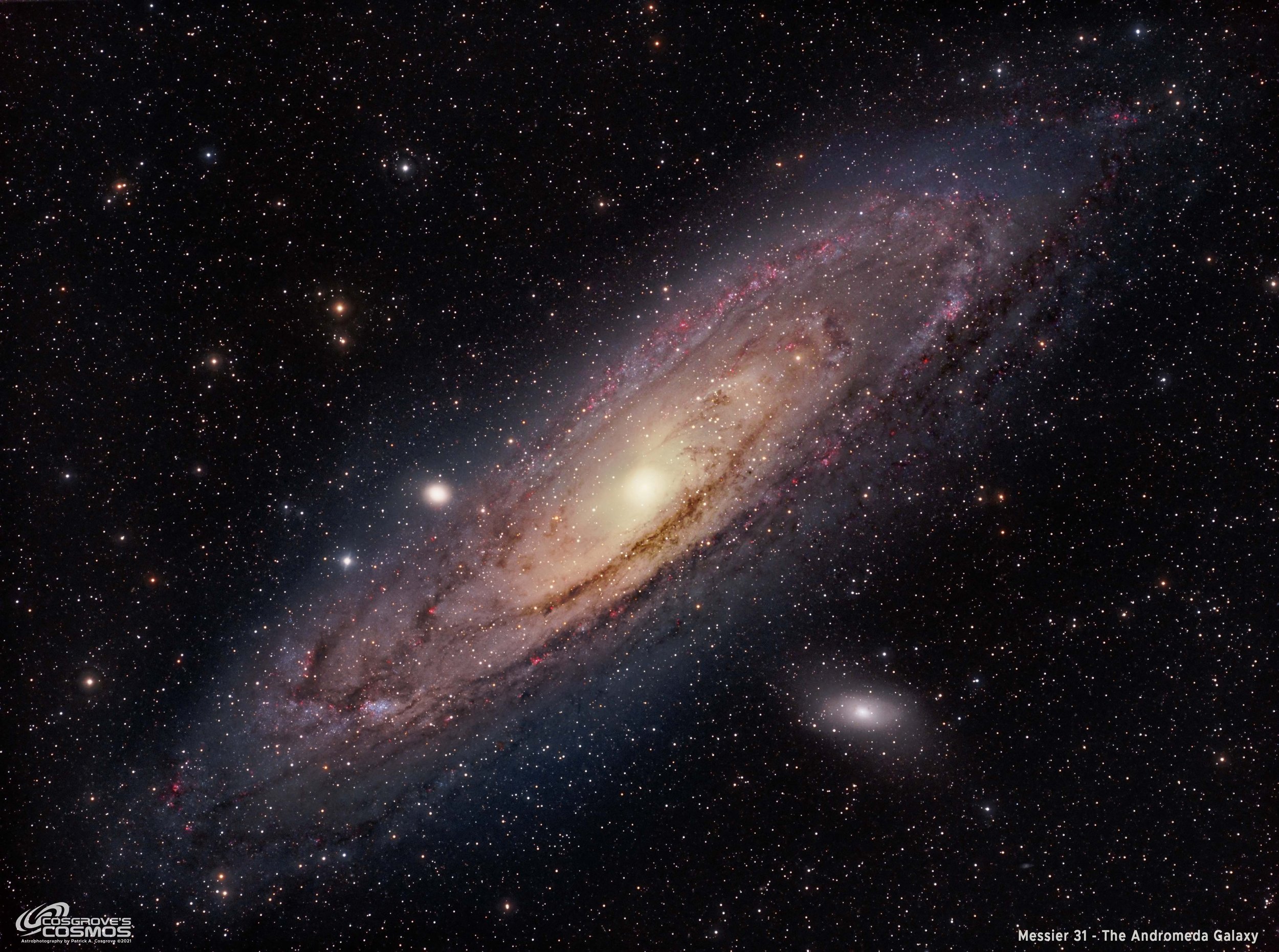
Messier 31 - The Andromeda Galaxy in LHaRGB - 6 hours
This is my third attempt at M31. This time with a widefield system that can fit the entire galaxy into the field of view., and a mono camera that allowed me to collect Ha as well as LRGB data. A total of 6 hours of data integration.
Messier 31 is also known as NGC 224 and the Andromeda Galaxy, or as the Andromeda Nebula before we knew what galaxies were. It can be seen by the naked eye in the constellation Andromeda (how appropriate!) and is our closest galactic neighbor located 2.5 Million light-years away. It is estimated that it contains about one trillion stars - twice that of our own Milky Way.
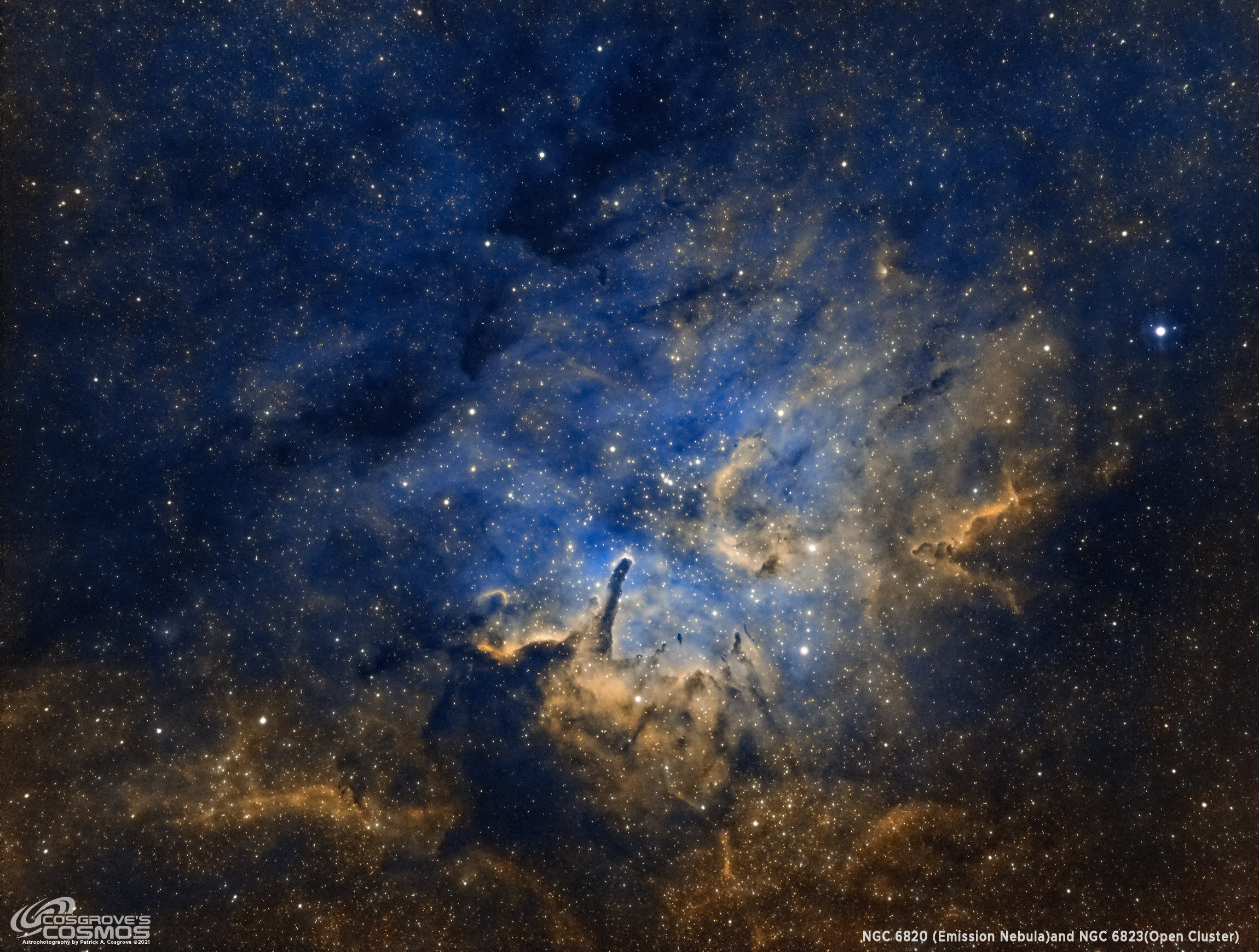
NGC 6820 and NGC 6823 - An Open Cluster w/Nebula - A Grudge Match…
Located in the constellation Vulpecula, NGC 6823 is a small open cluster of stars and associated nebula, NGC 6820. The cluster is about 6000 light-years away and measures about 50 light-years across.
A year ago, I shot this, and it was one of the worst images in my collection. I came back again this year to reclaim my honor and vanquish this target foe!
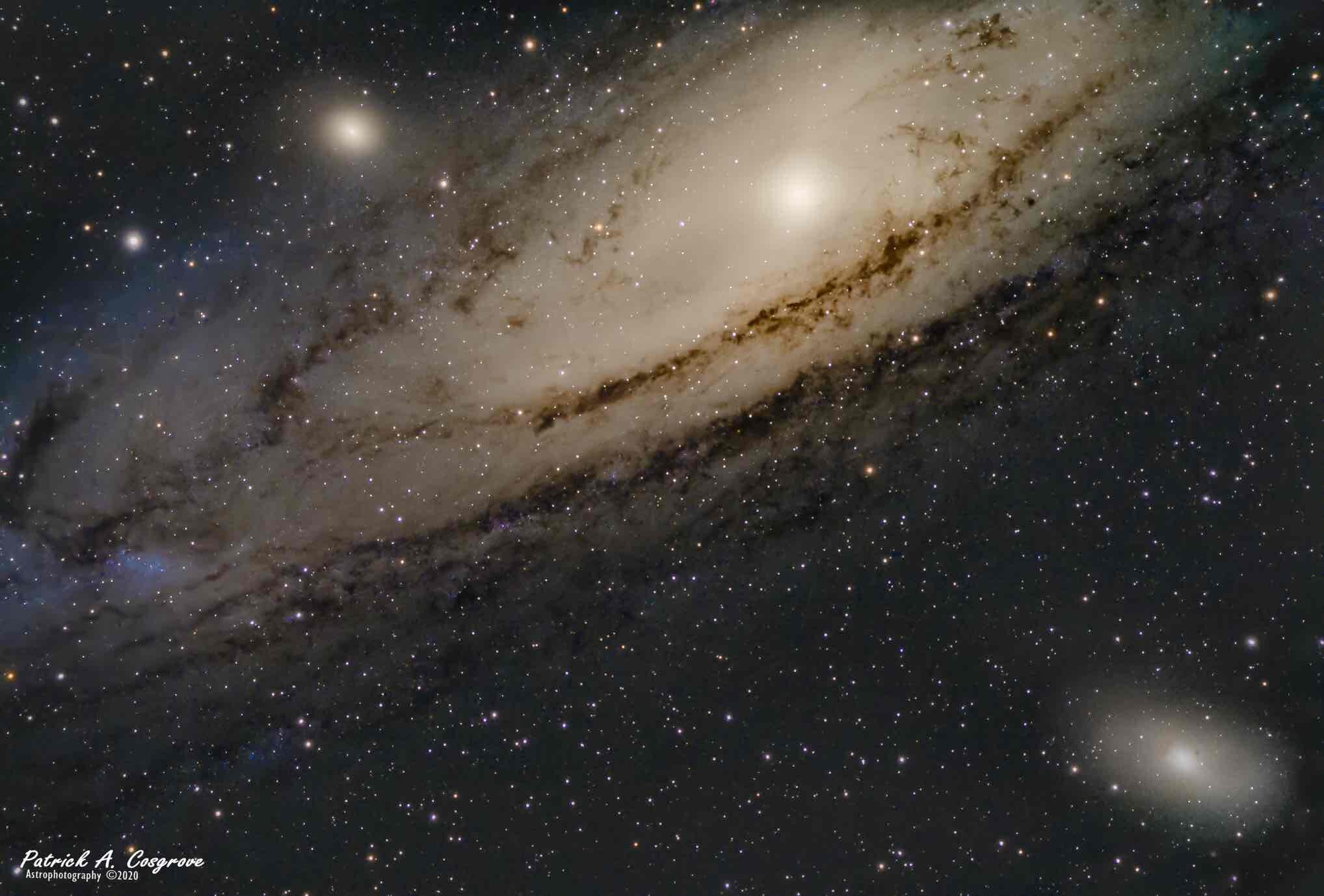
Messier 31 - The Andromeda Galaxy - with Neighbors M32 and M110
This is my second attempt at M31. With a larger focal length, I could not fit the whole galaxy in so I experimented with a framing that showed it’s two neighbors.
Messier 31 is also known as NGC 224 and the Andromeda Galaxy, or as the Andromeda Nebula before we knew what galaxies were. It can be seen by the naked eye in the constellation Andromeda (how appropriate!) and is our closest galactic neighbor located 2.5 Million light Years away. It is estimated that it contains abut one trillion stars - twice that of our own Milky Way.
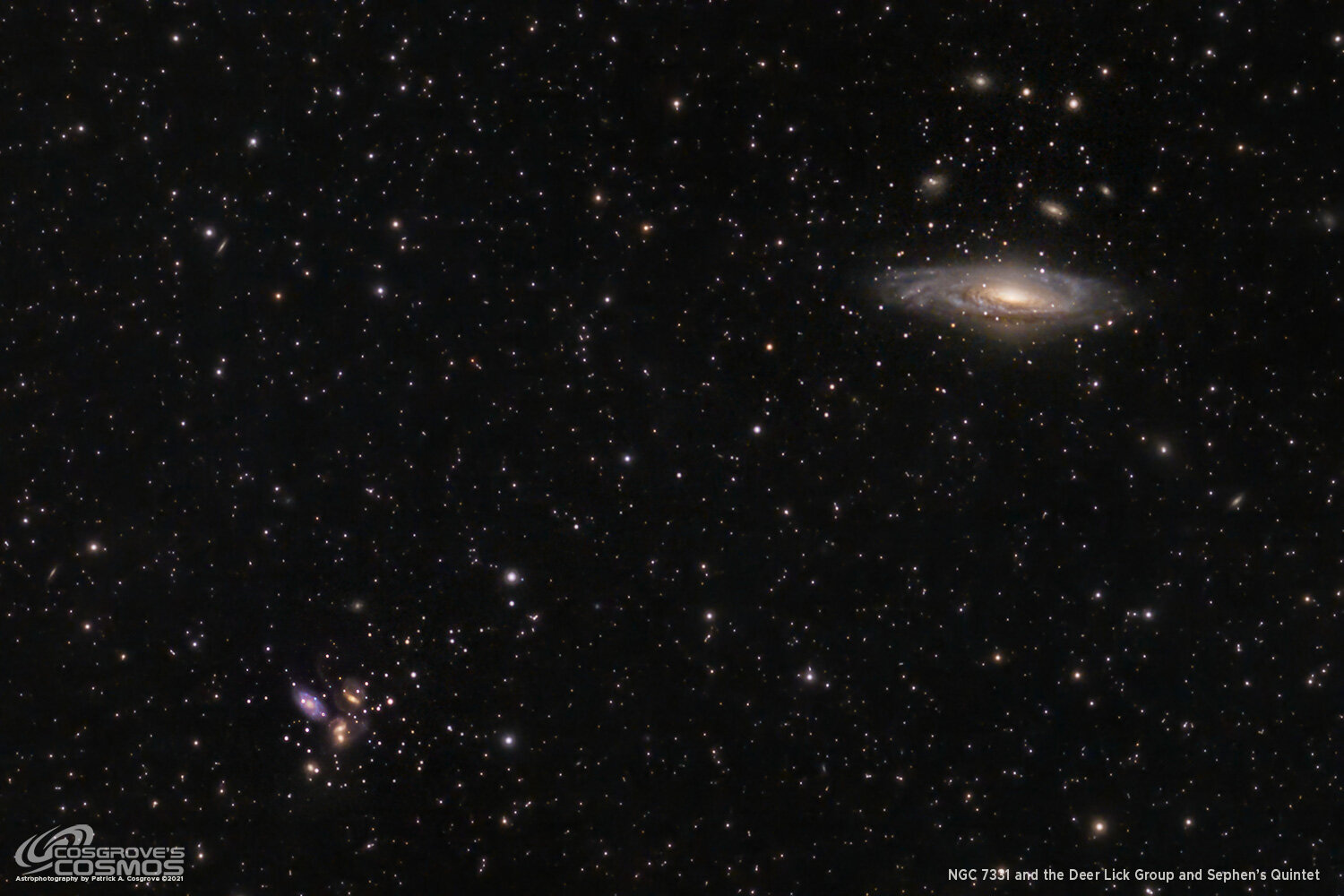
NGC 7331 and Two Galaxy Groups: The Deer Lick and Stephen's Quintet
Hot off the presses from my photo session last night: NGC 7331 and Two Galaxy Groups: The Deer Lick and Stephen's Quintet.
There are plenty of star clusters out there, but I was interested in shooting a cluster of Galaxies. Stephen's Quintet is high enough this time of year to clears my trees about midnight, so I started to plan on capturing that. I soon realized that I could get two for the price, as The Deer Lick Galaxy group would fit in the same frame if I composed the shot well.
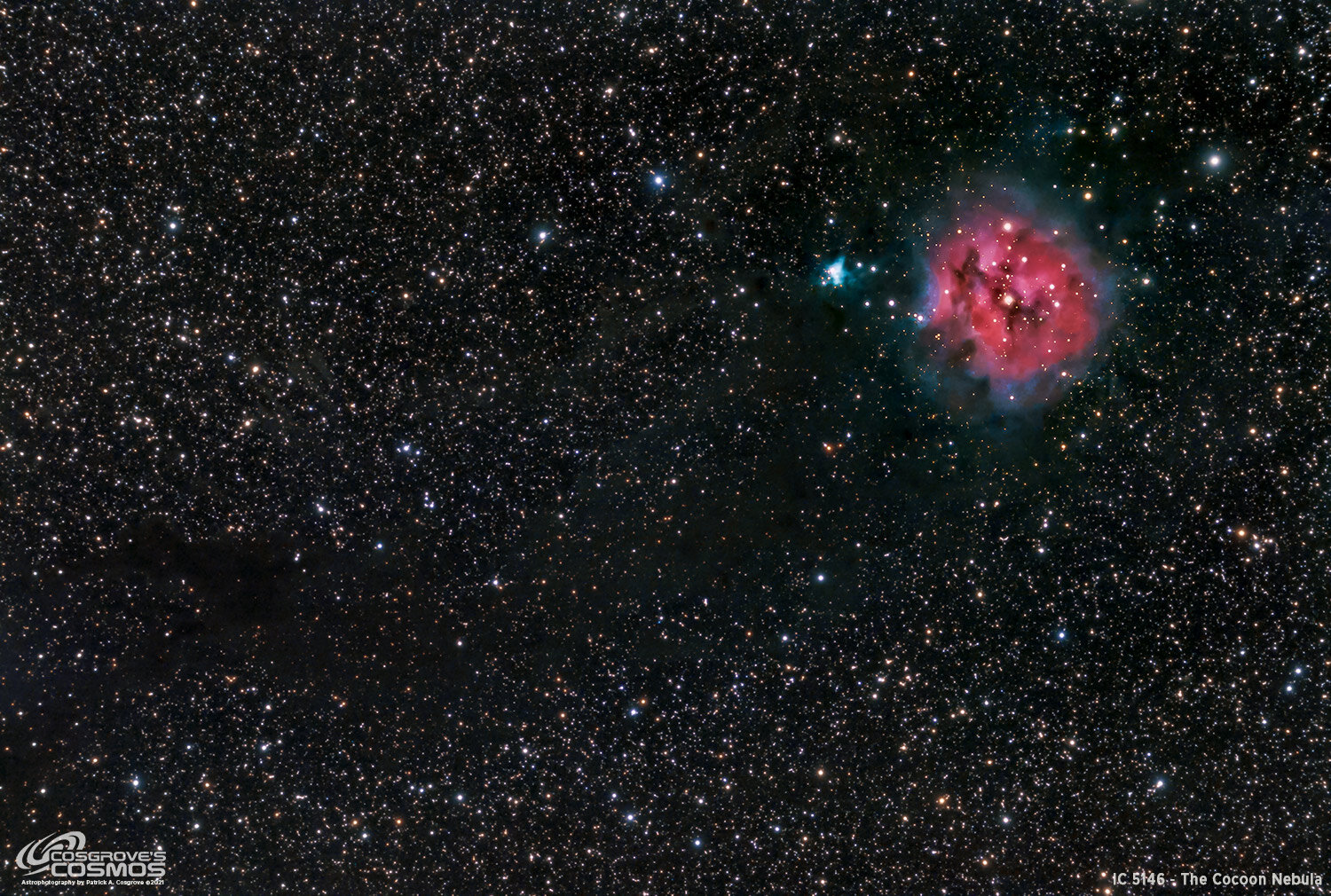
IC 5146 - The Cocoon Nebula
Located 4000 light-years from Earth, IC 5146 - better known as the Cocoon Nebula, is an area of both bright and dark nebulae in the constellation of Cygnus the Swan. The red portion is due to light shining from hydrogen emissions, while the blue portions of the nebula consist of dust reflecting the light young hot blue stars. At the core of the nebula is a bright star that only formed about 100,000 years ago. The shell of gas is about 15 light-years across. Also seen is a dark lane of dust that appears to project from the main nebula towards the west. This dark object is an obscuring cloud of dust known as Barnard 168. To me, it almost looks as if the dark cloud is emanating from and trailing the Crescent Nebula - I like the effect!
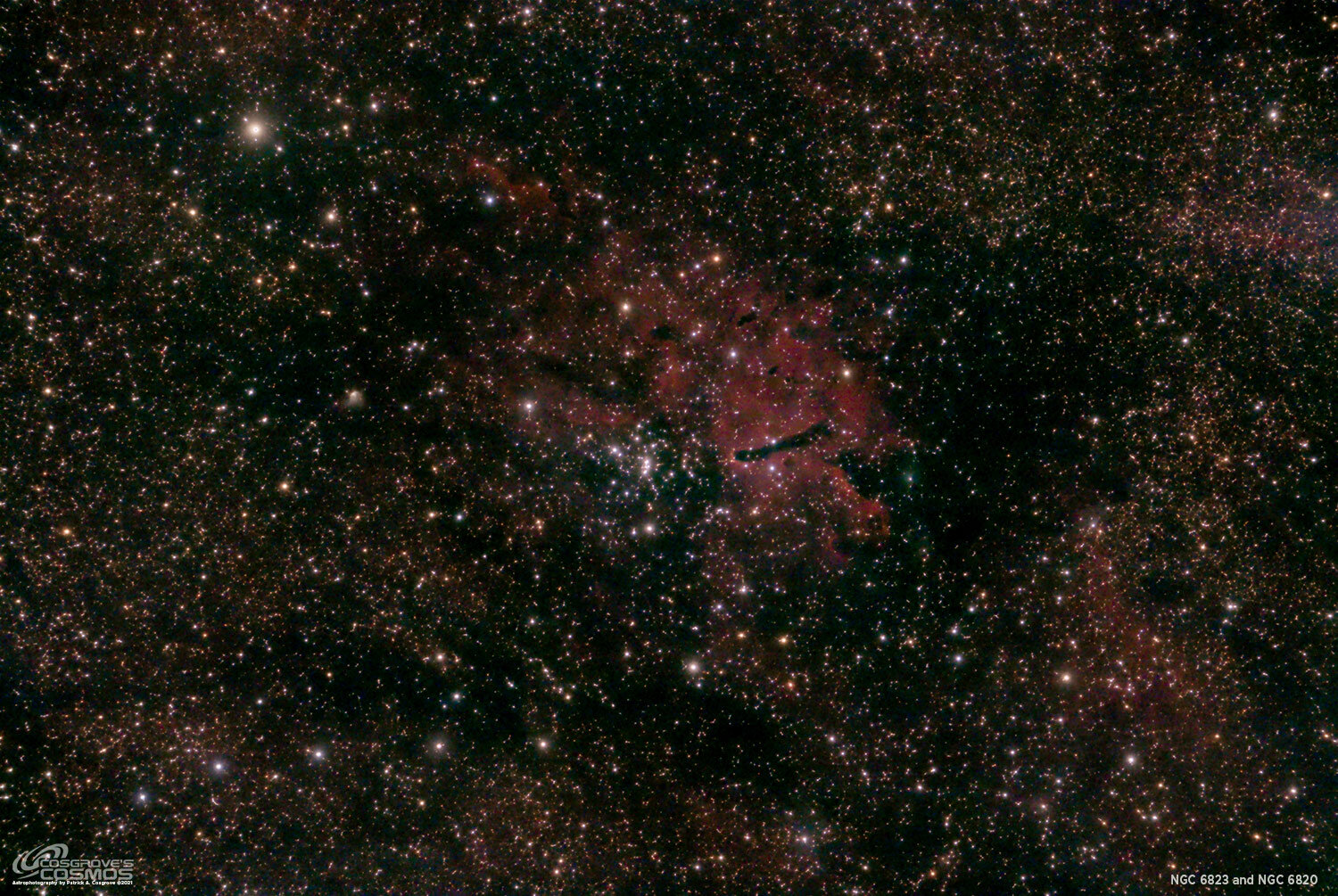
NGC 6823 & 6820 - An Open Cluster w/Nebula - Quite Possibly The Worst Image I Have Ever Taken!
Located in the constellation Vulpecula, NGC 6823 is a small open cluster of stars and associated reflection nebula, NGC 6820. The cluster is located about 6000 light-years away and measures about 50 light-years across.
This was one of the worst images I have ever done. Target not carefully chosen, no plan in place, poor shooting conditions. Just a real Bluh Image!

NGC 6992 - The Veil Nebula
NGC 6992, The Veil nebula, is a collection of hot gas and dust that forms a portion of a supernova remnant. Located 2400 light-years in the constellation of Cygnus, It forms one visible portion of the Cynus Loop - an expanding shockwave bubble from a star that went supernova between 10,000 and 20,000 years ago. The expanding gas from this explosion compressed Hydrogen, Oxygen, and Sodium, causing the formation of shockwaves and causing the colors you see here.

NGC 6960 - The Witches Broom Nebula
NGC 6960 - The Witches Boom Nebula
Some time between 10,000 and 20,000 years ago - a star - twenty times more massive than our Sun, went supernova. The exploding outer layer of gas was blown off and has expanded in size ever since. This "ring" is known as the Cygnus Loop or the Veil nebula, and is now over 3 degrees in diameter (6 times bigger than a full Moon!) and is located 2400 light-years away in the constellation Cygnus the swan. Parts of this loop are brighter and have their own designations. NGC 6960 is one of those. It is also known as the Western Veil, The Finger of God, The Lacework Nebula, The Filamentary Nebula, and Caldwell 34. The bright star in the image is 52 Cygni. The colors are from the emission of Hydrogen, Oxygen, and Sodium gas excited by stars.
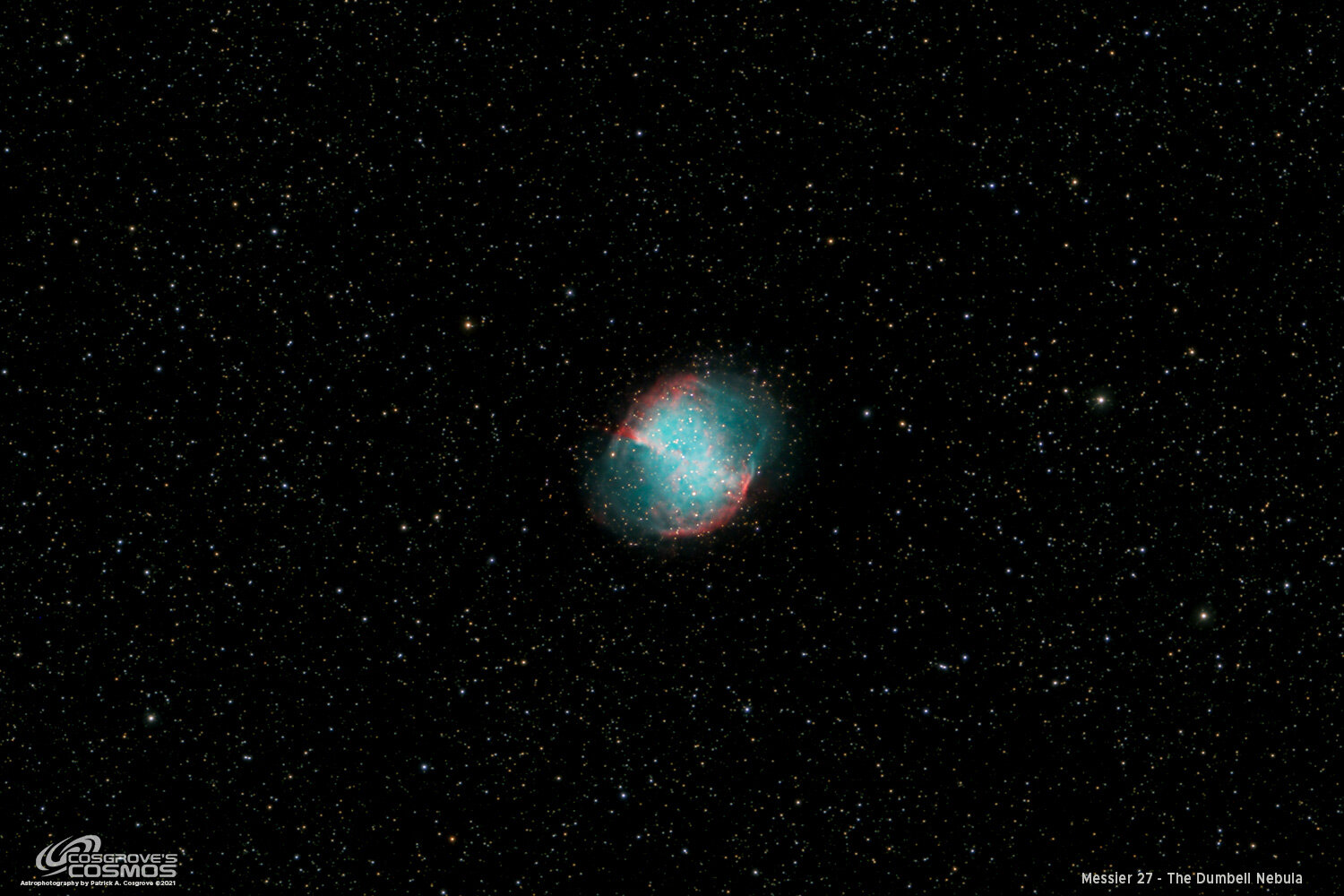
Messier 27 - The Dumbell Nebula
Messier 27 is a planetary nebula in the Constellation Vulpecula and is located about 1200 light-years away. M27 is also known as the “Apple Core” nebula and NGC 6853. It's basically a star the blew up between 10,000 and 14,000 years ago, and we get to see its expanding gas cloud. While this object is small, it is twice the size of the Messier 57 (The Ring Nebula) and allows for a bit more detail to be imaged. This was my second attempt at M27, the first being 2019 when I was first starting. See the comparison between the two.
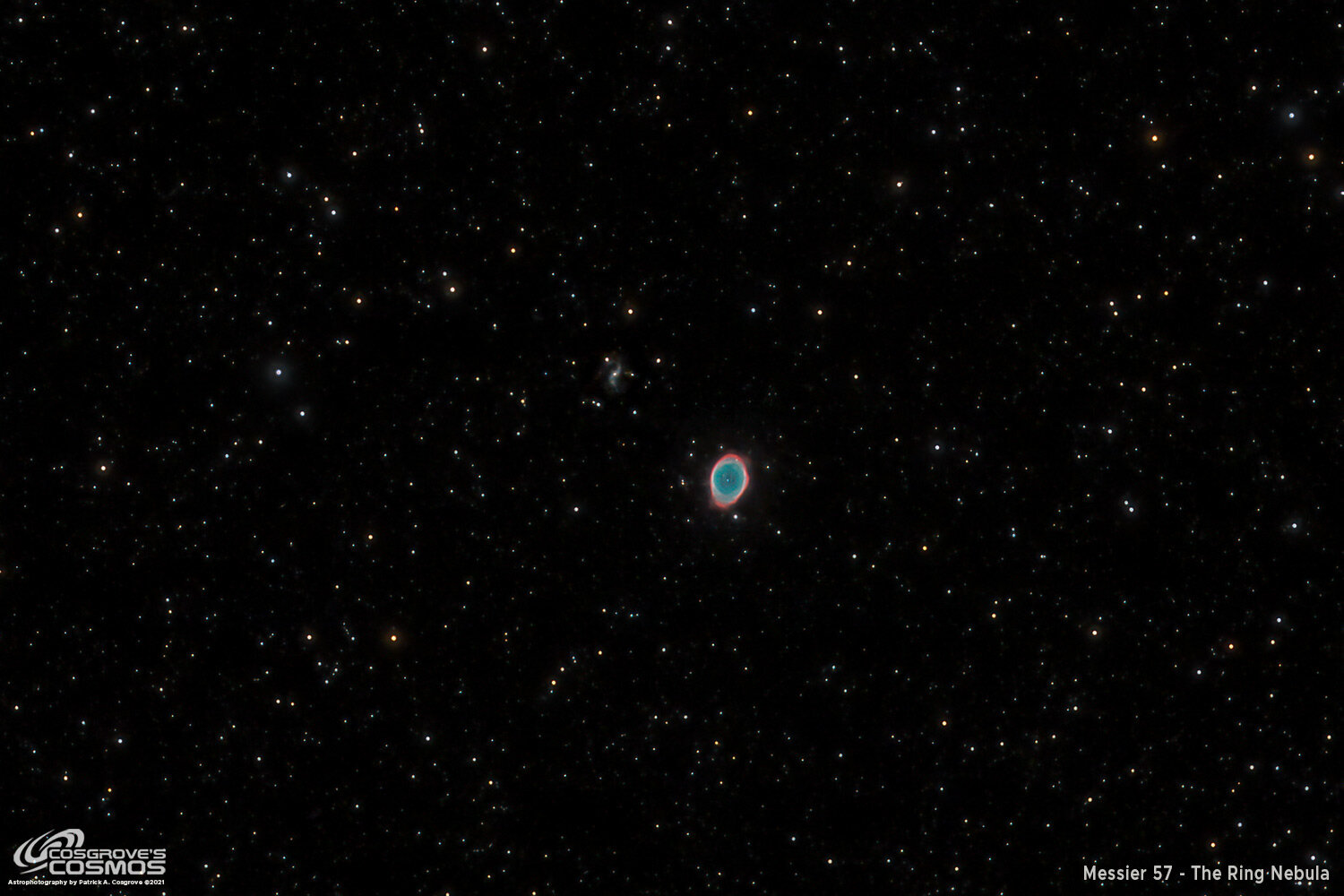
Messier 57 - The Ring Nebula
Messier 57, also known as NGC 6720, and the “Ring Nebula” is located about 2400 light-years away in the constellation Lyra. M57 is a planetary nebula - an expanding shell of gas and dust expelled by its star in the last stages of its life. The outer shell is expanding at a rate of ~one arcsecond per century. The blue-green color of the central area is due to doubly ionized oxygen. This was my second attempt at M57, the first being 2019 when I was just starting. See the comparison between the two.
